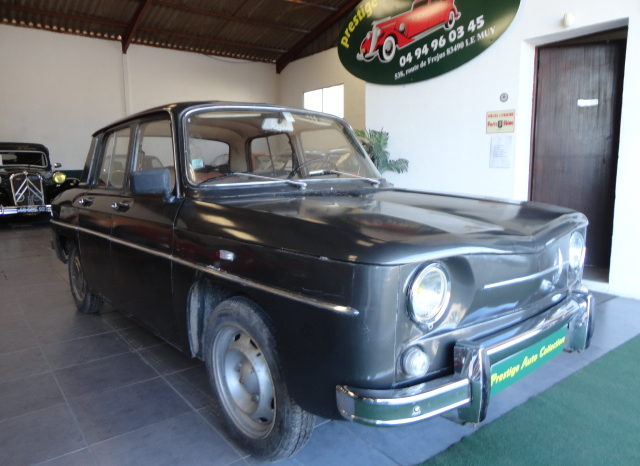Contents • • • • • • • • • • • • • • • • • • • Renault 8 [ ] Launch [ ] The R8 (model R1130) was released in June 1962 and was based on the with which it shared its basic architecture and its 2,270 mm (89.4 in) wheelbase. The style, closely following that of the first prototype produced, at unusually short notice, by Philippe Charbonneaux, was fashionably boxy; however, while the Renault 8 was actually 30 mm (1.2 in) narrower than the Dauphine, the manufacturer was able to install thick cushioned front seats that were actually each 60 mm (2.4 in) wider, at 560 mm (22.0 in), than those fitted in the Dauphine. The R8's engine followed the pioneering example of the recently introduced by incorporating a sealed for life cooling system. A distinctive innovation on the French produced cars was the fitting of four-wheel disc brakes, a first for a of this size. However, when in 1965 introduced their own version of the Renault 8 for the (then tariff-shielded) Spanish market, it came with drum brakes.

Renault and Rosoboronexport, the state corporation that is a major stockholder of VAZ, discussed Renault increasing its stake in VAZ to 50%. More Renault Major images.
The 8 was powered by an all new 956 cc developing 44 (32; 43 ). Automatic transmission [ ] For 1963 (initially only in France), Renault offered an of unique design, developed and produced by Jaeger. It was first shown at the September 1962. Although it was described as a form of automatic transmission at the time, in retrospect it was more realistically a form of automatic clutch, inspired by the German device which appeared as an option on several mainstream German cars in the 1950s and 60s. The clutch in the system was replaced by a powder coupler, developed from a design. The transmission itself was a three-speed mechanical unit similar to that of the Dauphine, but from the beginning with synchromesh on all gears in this version.
The system used a dash-mounted push button control panel where the driver could select forward or reverse and a governor that sensed vehicle speed and throttle position. Facebook Security Software 100 Working Rar. A 'relay case' containing electromagnetic switches received signals from the governor and push buttons and then controlled a coupler, a decelerator to close the throttle during gear changes, and a solenoid to select operation of the reverse-first or second-third shift rail, using a reversible electric motor to engage the gears. Windows Style Builder 1.5. The system was thus entirely electromechanical, without hydraulics, pneumatics or electronics.
Benefits included comparable fuel economy to the manual transmission version, and easy adaptability to the car. Drawbacks included performance loss (with only three available gears) and a somewhat jerky operation during gear changes.
The transmission was also used in the Dauphine and the. Engine upgrades [ ] A more powerful model, the 8 Major (model R1132), was released in 1964, featuring an 1108 cc engine developing 50 PS (37 kW; 49 hp). A still more powerful version, the 8 model R1134, was also released that year, with a tuned engine of the same capacity but developing 90 PS (66 kW; 89 hp). The extra power was obtained by a cross-flow head and twin dual-choke 40mm side-draft Solex carburetors.
A four-speed close ratio manual transmission, dual rear shock absorbers and uprated springs were fitted. The R1134 Gordini was originally available only in blue, with two stick-on white stripes. It was also distinguishable from the 8 Major by the bigger 200mm headlamp units. In 1965, the Renault 10 Major, a more luxurious version of the 8 with different front and rear styling, was released, replacing the 8 Major.
Facelift [ ] In 1967, the R8 Gordini (model R1135) received a facelift including two additional headlights (in effect Cibie Oscar driving lights), and its engine upgraded to a 1255cc unit rated at 100 PS (74 kW; 99 hp). The R1134 Gordini cross-flow head design was retained, and twin dual-choke 40mm Weber side-draft carburetors. Both the 8 and the 10 were heavily revised for 1969. Some of the 10's features being incorporated in the 8, resulting in a new 8 Major which replaced the basic model.